20 Typical American Dinners From The 1800s—How Did They Eat?

The 1800s in America was a time of culinary diversity, shaped by regional ingredients and immigrant influences. From pioneer staples to immigrant-inspired dishes, the era showcased a wide array of flavors and cooking techniques. This post explores twenty typical American dinners from the 1800s, offering a glimpse into the daily lives and palates of people during that time.
1. Roast Pork with Apple Sauce
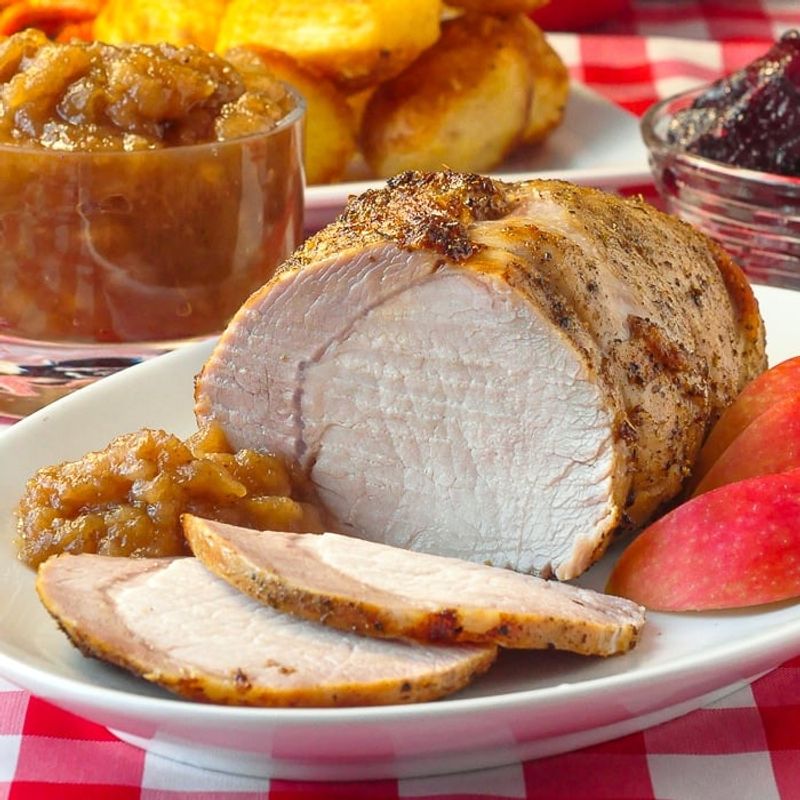
Pork, a staple in 1800s America, was frequently paired with apple sauce for a perfect balance of flavors. This dish was a common dinner option, especially in rural areas where pork was readily available. The sweet-savory combination made it a family favorite.
Often served with a side of potatoes and cabbage, it provided a hearty meal that could easily feed a large family. The pork was typically roasted to tender perfection, allowing the apple sauce to enhance its natural flavors.
Its simplicity and ease of preparation made it a quintessential dish of the era.
2. Chicken Pot Pie
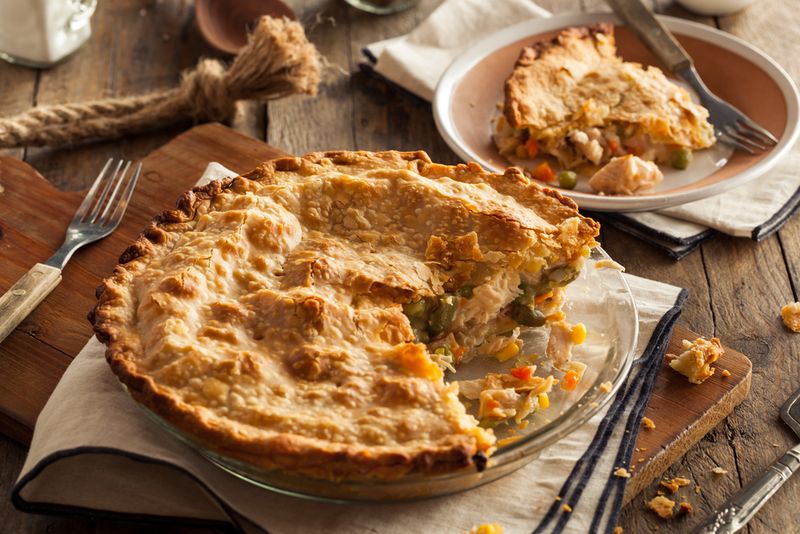
Chicken Pot Pie in the 1800s was a far cry from the modern frozen variety. Made with hand-chopped chicken and fresh vegetables, this dish was cooked in a lard-based crust. The use of a cast iron pan added a unique flavor profile.
Homemade and comforting, the pie brought warmth to many households. The inclusion of seasonal vegetables allowed for variation, making it adaptable to different regions.
This hearty pie was a staple in American homes, often enjoyed during family gatherings, providing nourishment and satisfaction in every bite.
3. Salt Pork and Beans
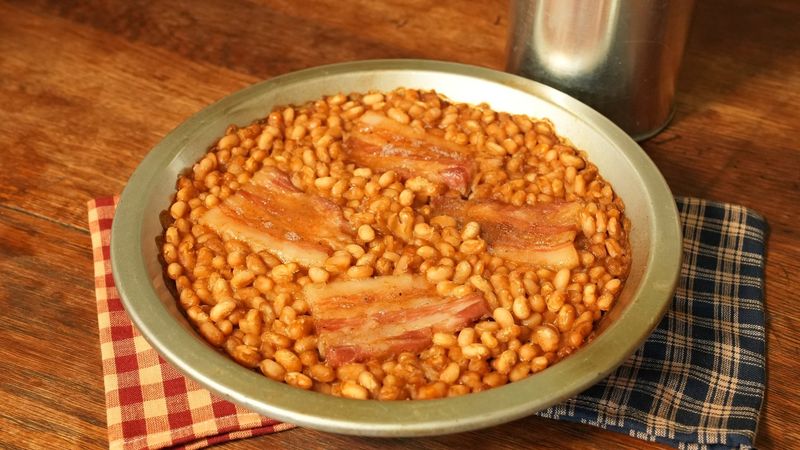
Salt Pork and Beans was a popular dish among pioneers and rural communities in the 1800s. The beans, slow-cooked with chunks of salty, fatty pork, created a satisfying and flavorful meal.
This dish, both economical and nourishing, was perfect for feeding large families or community gatherings. Its ingredients were easy to store and transport, making it a favorite among travelers.
The simplicity of this dish, combined with its robust flavors, made it an essential part of the 1800s American diet, showcasing the resourcefulness of its people.
4. Stewed Rabbit
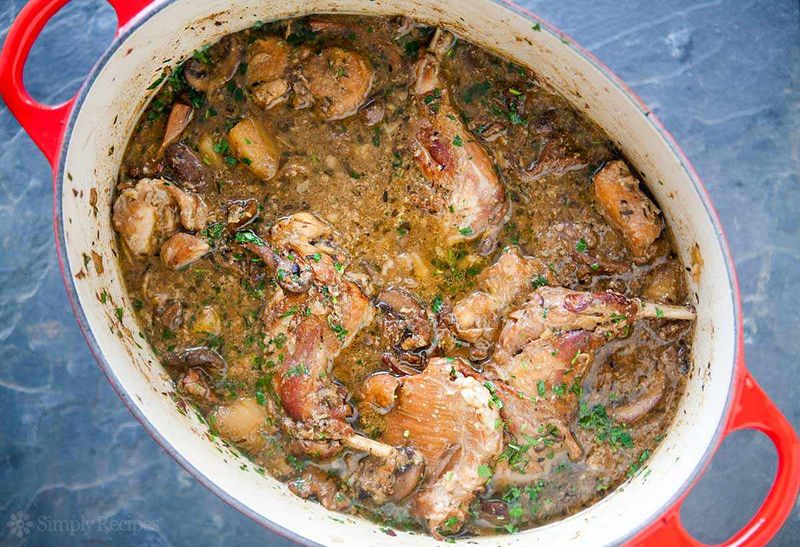
Stewed Rabbit was a common dish in frontier areas where game meat was normal fare. This hearty stew, made with root vegetables, offered a filling and affordable meal.
Hunting provided a steady supply of rabbits, making this dish accessible to many families. The addition of vegetables and herbs enhanced its flavors, making it a comforting and nourishing option.
In a time when resources were limited, Stewed Rabbit exemplified the ingenuity of American cooks who made the most of available ingredients.
5. Hominy and Fried Ham
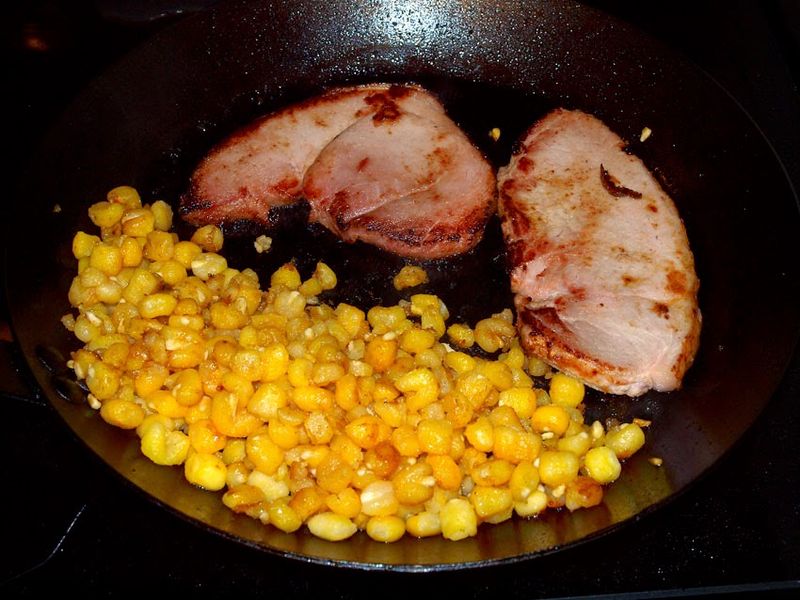
Hominy and Fried Ham was a Southern staple in the 1800s, offering a taste of comfort and satisfaction. Corn-based hominy, served with pan-fried ham, provided a delightful blend of textures and flavors.
This dish was often accompanied by fresh greens, adding a touch of freshness to the meal. The simplicity of the ingredients made it accessible to a wide range of households.
Hominy’s versatility allowed for different preparations, while the ham added a savory richness that was hard to resist, making it a beloved meal in Southern homes.
6. Corned Beef and Cabbage
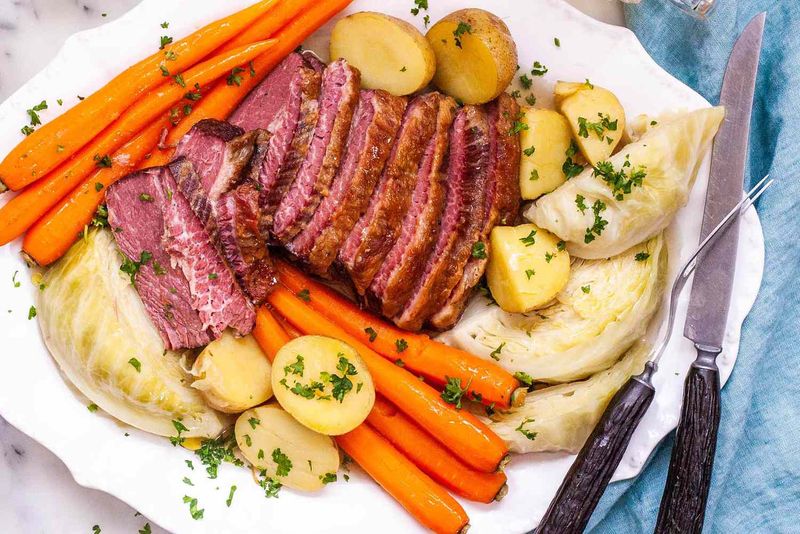
Corned Beef and Cabbage, popular among Irish immigrants, became widely adopted in America during the 1800s. The meat was traditionally brined at home before being boiled with cabbage and carrots.
This dish was both hearty and flavorful, providing a filling meal for families. Its simplicity made it a household favorite, especially during festive occasions.
The combination of tender beef and soft cabbage offered a comforting experience, reflecting the blending of cultural culinary practices in America.
7. Pot Roast with Turnips and Carrots
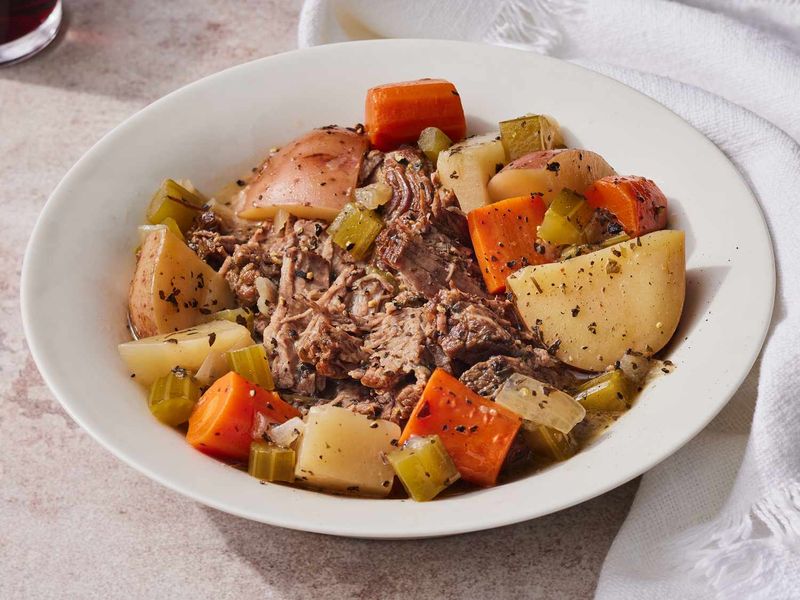
Pot Roast with Turnips and Carrots was a classic one-pot meal in 1800s America. Using cheap cuts of beef, this dish was slow-cooked until fork-tender, creating a deliciously tender meal.
The addition of root vegetables like turnips and carrots added depth and flavor, making it a complete meal that satisfied even the heartiest appetites.
In a time when resources were precious, pot roast exemplified a resourceful way to create a nourishing meal with minimal ingredients, capturing the essence of home-cooked comfort.
8. Fish Chowder
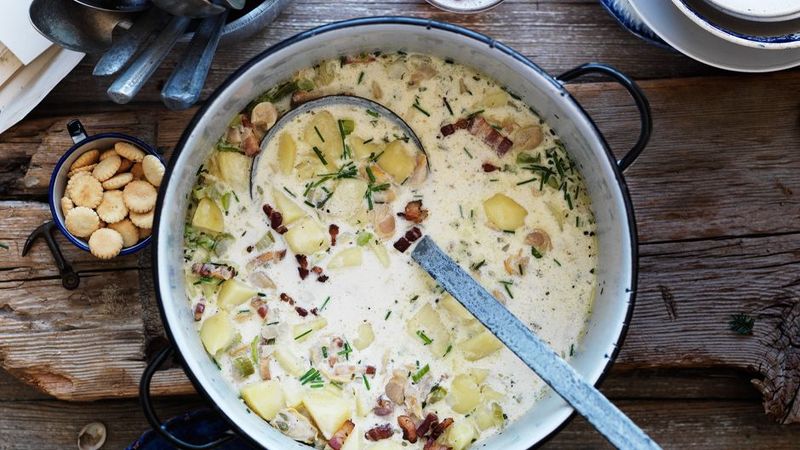
Fish Chowder was a staple in coastal families during the 1800s, making use of the abundant seafood available. Made with cod, potatoes, and onions, the dish was thickened with milk or cream to create a rich and satisfying meal.
Served hot and steaming, it provided warmth and comfort, especially during colder months. The flavors melded beautifully, showcasing the freshness of the ingredients.
This chowder was more than just a meal; it represented the connection between families and their coastal surroundings, celebrating the bounty of the sea.
9. Succotash
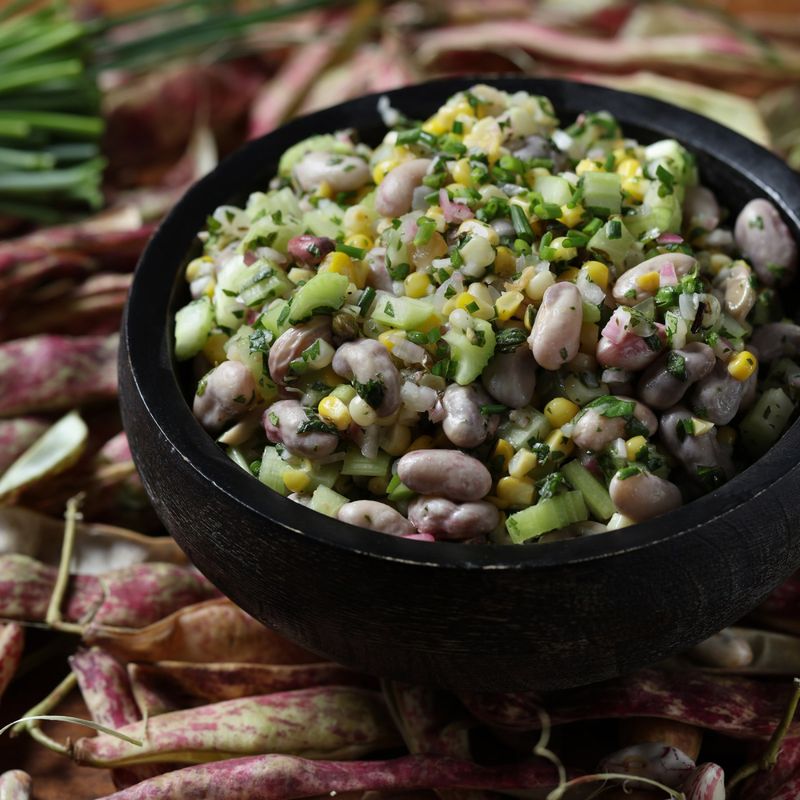
Succotash, influenced by Native American culinary traditions, became a beloved dish in 1800s America. Made from corn, lima beans, and sometimes bacon or salt pork, it offered a satisfying and flavorful combination.
The dish was versatile and could be easily adapted to available ingredients, making it a favorite among families. It provided not only nutrition but also a taste of cultural heritage.
This simple yet delightful dish continues to be a symbol of shared culinary history, reflecting the blending of cultures in America.
10. Fried Catfish with Cornbread
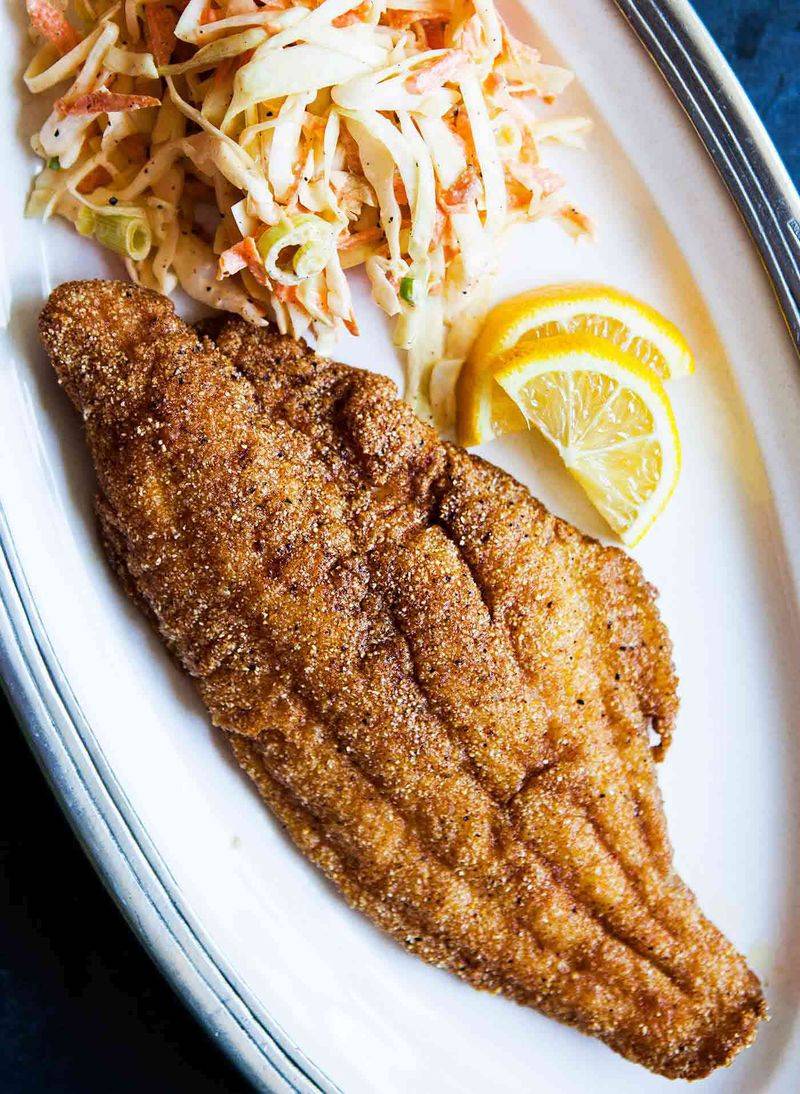
Fried Catfish with Cornbread was a beloved dish in Southern and frontier areas during the 1800s. Fresh-caught catfish, battered in cornmeal, was fried to crispy perfection.
Served alongside hot cornbread and molasses butter, it offered a delightful blend of flavors and textures. The dish was both satisfying and nourishing, reflecting the ingenuity of Southern cooks.
The combination of crispy catfish and soft cornbread became a staple in many households, providing a taste of home and a connection to regional culinary traditions.
11. Boiled Mutton with Onion Sauce
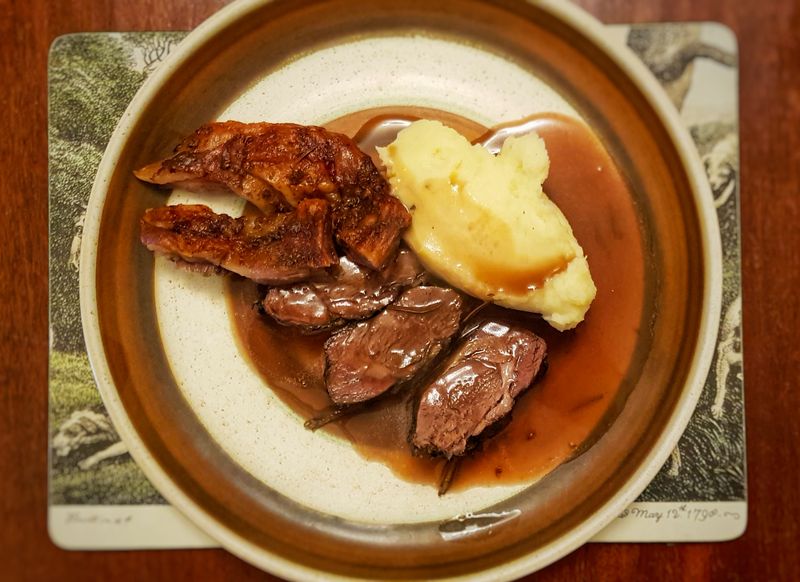
Boiled Mutton with Onion Sauce was a common dinner option in 1800s America. Mutton, or older lamb, was often boiled to tenderize the meat.
Served with a sharp onion sauce, this dish offered a rich and flavorful experience. The sauce provided a tangy contrast to the fatty mutton, balancing the flavors beautifully.
This dish was not only filling but also represented a practical approach to cooking, utilizing every part of the animal and minimizing waste.
12. Venison Steak with Baked Potatoes

Venison Steak with Baked Potatoes was a staple in hunting households during the 1800s. The tender venison, grilled or pan-seared, offered a flavorful and satisfying meal.
Paired with baked potatoes, it provided a hearty dinner that was both nourishing and filling. The use of game meat reflected the resourcefulness and skills of frontier families.
This dish was more than just a meal; it was a celebration of nature’s bounty and a testament to the hunting and cooking traditions of the era.
13. Rice and Milk
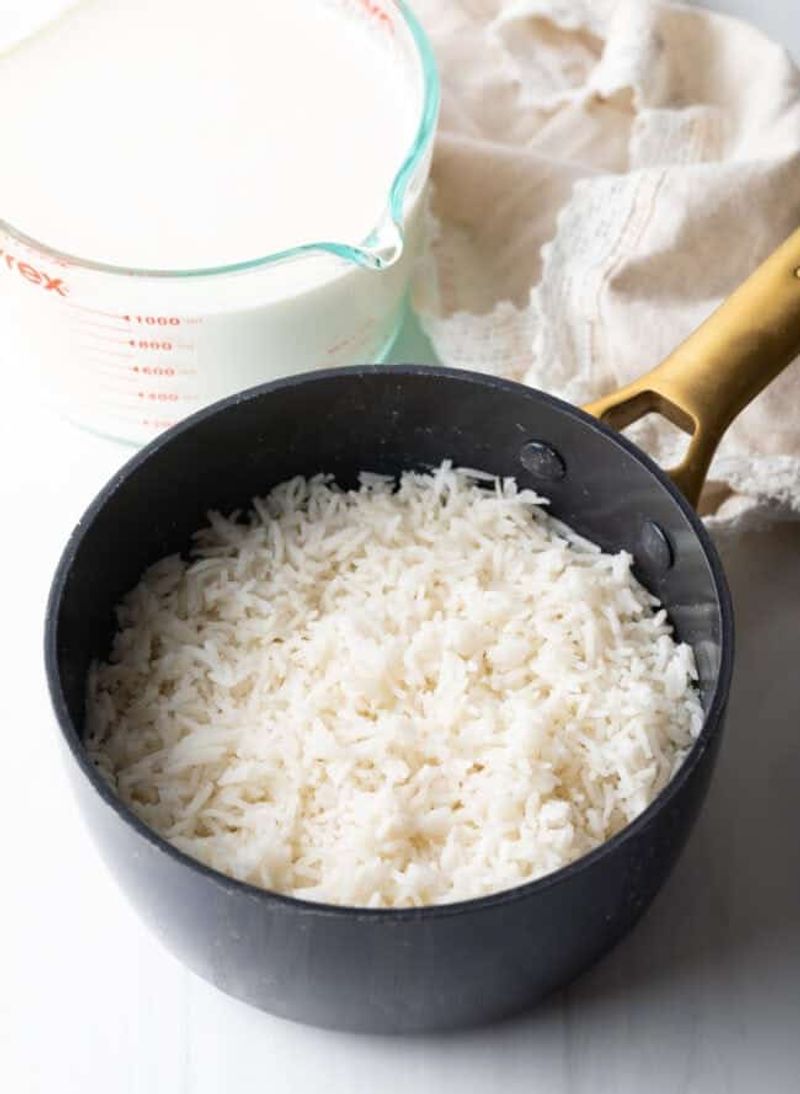
Rice and Milk was a simple and comforting dish, especially in poorer homes during the 1800s. This meal, sweetened with sugar or molasses when available, provided a satisfying and nourishing option.
It was often served as a breakfast or dessert, allowing families to stretch their resources. The simplicity of the dish made it accessible to all, regardless of economic status.
This humble meal reflected the ingenuity of people during lean times, providing warmth and comfort in a bowl.
14. Chicken and Dumplings

Chicken and Dumplings was a rustic dish that brought warmth and comfort to many American homes in the 1800s. Made with boiled chicken and flour-based dumplings, it simmered in a rich broth.
The dish was both filling and economical, making it a favorite among families. The combination of tender chicken and soft dumplings created a satisfying and hearty meal.
Its simplicity allowed for variations, adapting to regional ingredients and personal preferences, making it a versatile and beloved dish.
15. Johnnycakes and Molasses

Johnnycakes and Molasses were a staple in 1800s America, offering a taste of simple comfort. These cornmeal flatbreads, fried on a griddle, were often served with syrup or lard.
The dish could be paired with beans or greens for a complete meal, providing sustenance and satisfaction. The sweet molasses added a delightful contrast to the savory cakes.
Easy to prepare and versatile, Johnnycakes became a favorite in many households, reflecting the resourcefulness and creativity of early American cooks.
16. Beef Tongue with Horseradish Sauce
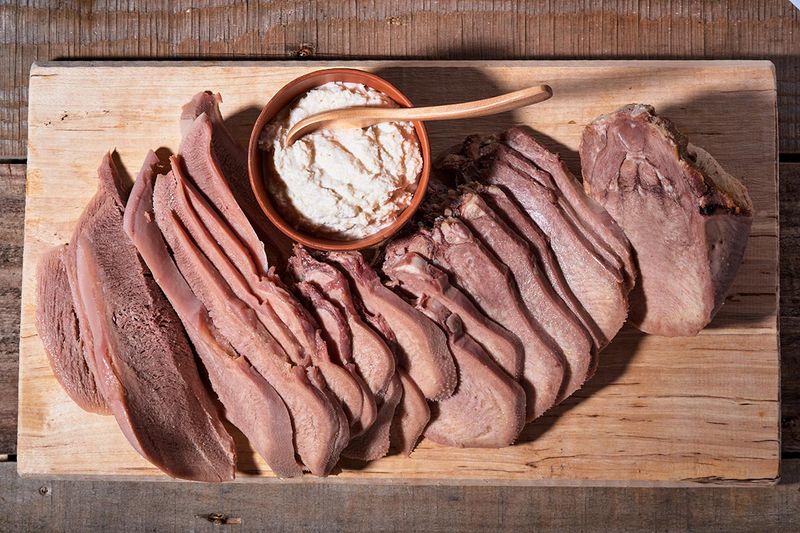
Beef Tongue with Horseradish Sauce was not uncommon in urban homes during the 1800s. The tongue was boiled and sliced, offering a rich and flavorful dining experience.
Served with a spicy horseradish sauce or pickled vegetables, it provided a unique taste that was both bold and satisfying. The dish showcased the frugality and creativity of cooks who utilized every part of the animal.
This dish was more than just a meal; it was a testament to the culinary ingenuity of the era, transforming humble ingredients into something extraordinary.
17. Shepherd’s Pie (American-Style)

Shepherd’s Pie, or American-Style, became popular in the late 1800s. Ground meat or leftovers were layered under mashed potatoes and baked to perfection.
This comforting dish provided a way to use up leftovers, creating a satisfying and economical meal. The creamy potatoes complemented the savory meat, offering a delightful balance of flavors.
Its growing popularity reflected changing tastes and the adaptation of European culinary traditions in America, making it a beloved dish in many households.
18. Oyster Stew

Oyster Stew was a favorite in 1800s America, especially in coastal areas where oysters were plentiful and cheap. Cooked with milk, butter, and a touch of salt, the stew offered a rich and simple dining experience.
The flavors melded beautifully, creating a comforting and satisfying meal that was often enjoyed during colder months. This dish was not only delicious but also a reflection of the abundance of local seafood.
Oyster Stew became a symbol of coastal life, showcasing the natural bounty of America’s shores.
19. Beans and Salted Bread

Beans and Salted Bread was a simple yet nourishing meal in 1800s America, especially in poorer households. Beans were simmered to perfection, offering a hearty and affordable option.
The salted bread, either dipped into the pot or toasted over the fire, added a satisfying crunch and flavor. This dish was both economical and filling, providing sustenance during lean times.
The simplicity and practicality of this meal reflected the resilience and resourcefulness of early American cooks, making it a staple in many homes.
20. Baked Squirrel with Corn Pudding
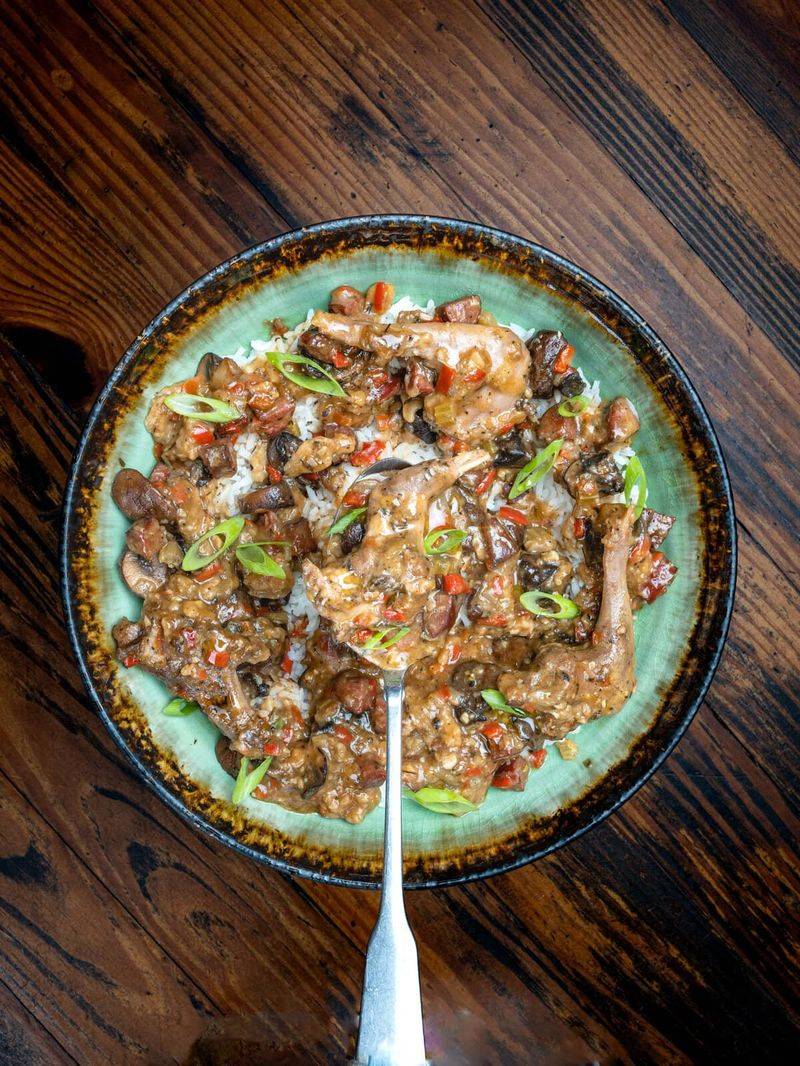
Baked Squirrel with Corn Pudding was not as unusual as it may seem today. In the 1800s, small game like squirrel was a common source of protein, especially in frontier areas.
Paired with corn pudding or mashed root vegetables, this dish offered a unique and satisfying dinner option. The tender baked squirrel provided a rich flavor that complemented the sweetness of the pudding.
This meal was a testament to the ingenuity and adaptability of frontier families, making use of available resources to create a nourishing and flavorful dish.
